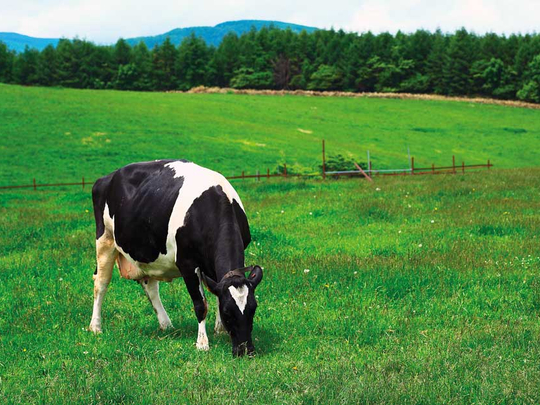
A can of milk may sit in virtually every refrigerator, but milk has never been just another food. Even if its merits and disadvantages have been debated in recent years, it has remained the most popular choice of every household for their daily dose of nutrition.
It has many benefits, such as helping in weight loss, building stronger bones and teeth, boosting the immune system, protecting the heart from diseases, preventing diabetes, eliminating inflammation, and also helping to stimulate physical as well as mental growth.
Now, if milk does so much good for your health, it might do even better if it comes from dairy cows grazed on grass instead of on feedlots, according to a new study.
Professor Carlo Leifert, Director of the Centre for Organics Research, at Australia’s Southern Cross University, and co-author of an international study analysing 1,163 milk samples in the US over three years, found milk from grass-fed cows was higher in omega-3 and other good fatty acids, than milk from cows that subsisted on a mostly grain diet.
“The result that milk from cows grazing outdoors has more beneficial omega-3 fatty acids than milk from cows raised indoors on grain is not surprising given cattle have evolved to eat grass or roughage, not grain,” said Prof. Leifert.
Today’s milk can be divided into three categories: Conventional (the one found at the corner store or a typical grocery store) and not labelled organic or grass-fed; organic (labelled with the organic certification); and grass-fed.
“Hundred per cent grass-fed cow dairy comes from cows that have grazed in pastures year-round, which includes the winter and early spring,” says Sharif Ramadan, Head of Brands at NFPC, which manufactures popular milk brand Lacnor.
“Animals are free to roam the field to graze all spring, summer and early autumn. This brings them back to what their true nature is — being a grazing animal — so they are happier animals.” Earlier experiments have shown that cows on a diet of fresh grass produce milk with five times as much of an unsaturated fat called conjugated linoleic acid (CLA) than cows fed processed grains. Studies in animals have suggested that CLAs can protect the heart, and help in weight loss.
“The grass-fed milk coming from Lacnor is high in CLA,” says Ramadan. “Our cows spend 90 per cent of their time on average outside on pasture — that means a healthy dose of vitamin D. As a result, our cows produce milk with typically higher levels of vitamin D compared to cows that are often kept indoors.”
Lacnor milk production also follows the natural pattern of pasture growth. “Cows begin producing milk at the time when grass growth picks up in early spring,” says Ramadan.
“Milk production peaks when grass growth rates are the highest (October). Then in winter, our cows are generally rested when grass growth, and the nutrients it provides, is at its lowest.
“Ahead of World Milk Day, we wish to stress upon the importance of feed for dairy cows and how it can have a significant impact on the nutritional quality of milk and other dairy products,” Ramadan says.












